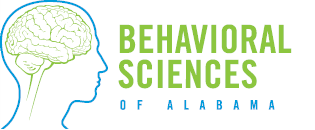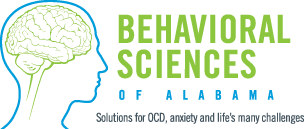Advanced Mental Health Research
Written Exposure Therapy (WET) for PTSD*
A treatment called Written Exposure Therapy (WET) is effective in reducing symptoms of post-traumatic stress disorder (PTSD).
It involves writing about traumatic experiences and has been successful in various populations and settings. In this case series, WET was applied to three individuals receiving treatment for substance use disorder in a group setting, and all showed positive results. Findings suggest that WET can be used alongside substance use treatment to help individuals with PTSD. Additionally, the series shows that WET can be adapted for group therapy and completed in a shorter timeframe of 2.5 weeks. These results support WET as a valuable tool in treating a large number of individuals with PTSD in a time-limited residential treatment program. Previous studies have also shown that WET is an efficient intervention, requiring fewer sessions and no additional assignments between sessions. Overall, WET has been supported by evidence as an effective treatment for PTSD.
Julie A. Schumacher, Kerry L. Kinney, Matthew C. Morris, Nicholas W. McAfee,
Biweekly Delivery of a Group-Based Adaptation of Written Exposure Therapy (WET) for PTSD in Residential Substance Treatment. Cognitive and Behavioral Practice, Volume 30, Issue 3, 2023, Pages 511-519.
Brief Imaginal Exposure for PTSD: Trajectories of Change in Distress.*
This study looked at a treatment called imaginal exposure (IE) therapy for post-traumatic stress disorder (PTSD).
The therapy involves six daily sessions where patients imagine and process their traumatic experiences. The study found that patients experienced a reduction in distress during these sessions, with the most distress being at the beginning and decreasing over time. This reduction in distress predicted a decrease in PTSD symptoms. The therapy seems to work by using a process called extinction learning, where the traumatic memory becomes less intense over time. This condensed therapy format may be a good option for PTSD patients who need shorter treatment. Understanding how this therapy works can help improve treatment for PTSD in the future.
Lori A. Zoellner, Elizabeth A. Lehinger, Peter L. Rosencrans, Sarah M. Cornell-Maier, Edna B. Foa, Michael J. Telch, Francisco Gonzalez-Lima, Michele A. Bedard-Gilligan,
Lori A. Zoellner, Elizabeth A. Lehinger, Peter L. Rosencrans, Sarah M. Cornell-Maier, Edna B. Foa, Michael J. Telch, Francisco Gonzalez-Lima, Michele A. Bedard-Gilligan,
Brief Imaginal Exposure for PTSD: Trajectories of Change in Distress. Cognitive and Behavioral Practice, Volume 30, Issue 3, 2023, Pages 341-353.
What Drives OCD Symptom Change During CBT Treatment?
Cognitive behavior therapy (CBT) remains the gold standard for treating OCD. Traditional cognitive therapy holds that obsessions produce distress, and compulsions are then performed to reduce that distress
The assumption that a functional relationship exists in that obsessions precede and drive compulsive rituals in OCD has been largely untested. This study was designed to be the first to test this assumption.
The study involved 84 participants seeking treatment for OCD who underwent CBT for 12 weeks. The researchers measured the severity of obsessions and compulsions at different points during the therapy. The results showed a temporal relationship between obsessions and subsequent changes in compulsions, meaning that obsessions preceded and led to changes in compulsions. supporting the traditional CBT model. This means that the study provided direct evidence that obsessions play a role in driving compulsions in individuals with OCD. These findings have important implications for understanding and treating OCD. However, more
research with larger and more diverse samples is needed to strengthen these conclusions.
*Laposa, J. M., Hawley, L. L., Grimm, K. J., Katz, D. E., & Rector, N. A. (2019). What Drives OCD Symptom Change During CBT Treatment? Temporal Relationships Among Obsessions and Compulsions. Behavior Therapy, 50(1), 87–100. https://doi.org/10.1016/j.beth.2018.03.012
Cognitive bias modification for thought-action fusion*
Thought-action fusion (TAF) refers to either the belief that having an intrusive/moral thought is equivalent to performing it or the belief that the presence of the thought makes it more likely to happen.
In research, TAF can take two forms: TAF-moral and TAF-likelihood. Also, in research findings, TAF-likelihood content is divided into whether the event impacts oneself or others. Either of these, TAF-likelihood-self or TAF-likelihood-others, are associated with psychopathology, even in non-clinical populations. TAF is a malleable cognitive bias that can be modified through cognitive behavior therapy. This research supports the effectiveness of psychoeducation before exposure to a TAF trigger task to improve this psychopathology by directly modifying biased information processing.
Participants in this study were 76 undergraduate students aged 18 through 50 who displayed TAF bias and endorsed obsessional symptoms after screening over 300 potential candidates. The study was built on a single-session training that examined TAF-incongruent training
(TAF-INC) against a stress management treatment (SMP) and TAF-congruent treatment (TAF-CON). However, this study hypothesized that TAF-INC would show a more significant reduction in TAF (TAF-total, TAF-moral, TAF-likelihood-self, and TAF-likelihood-others) relative to TAF-CON and SMP (stress management) at both post-training and one-month follow-up. It was hypothesized that TAF-INC would outperform TAF-CON and SMP in reducing emotional distress to obsessions, and SMP would outperform TAF-CON in lowering emotional distress, given its explicit focus on stress management skills.
Participants were randomly assigned to TAF-INC, SMP, and TAF-CON groups. The training lasted about 40 minutes using a word completion model; for example, I was walking the other day, and I kept having thoughts about a close friend being robbed at knife-point. By having this
thought, it is very unli_e_y (for TAF-INC sentence completion) or li_e_y (for the TAF-CON sentence completion).
The study outcome confirmed that TAF-INCongruent displayed a more significant reduction than TAF-CONgruent in anxiety, distress, and guilt post-training but did not significantly differ on the measure of stress compared with the SMP at post-training and after a one-month interval. The current study supported the effect of a single session of TAF-INC in reducing TAF bias and associated distress.
*Stephan Siwiec, Sarah Bodhy, Salahadin Lotfi, Han-Joo Lee. Cognitive bias modification for thought-action fusion: A placebo-controlled randomized experimental trial, Journal of Obsessive-Compulsive and Related Disorders, 37, 2023, 100787, https://doi.org/10.1016/j.jocrd.2023.100787.
Things that make you go Hmm: Myths and misconceptions within cognitive-behavioral treatment of obsessive-compulsive disorder
Cognitive behavior therapy is recognized as the gold standard for treating obsessive-compulsive
disorder, including children, adolescents, and adults.
Converging evidence from research and practice over the last forty-plus years strongly supports exposure and response prevention (E/RP) as a vital component of this approach.
E/RP is an empirically proven treatment of anxiety disorders, including OCD, where the individual is exposed to the anxiety-producing stimulus and asked to resist compulsive or safety behaviors. Exposure exercises help desensitize people or learn new responses to triggers, such
as intrusive thoughts, as the participant learns that thoughts are just thoughts. Clients are encouraged to practice exposure daily during treatment and continue to practice after treatment to help inoculate against relapse.
Myths and misconceptions in professional literature can create false beliefs as well-meaning proponents of alternative treatments cast E/RP in a negative light, suggesting E/RP is too aversive and distressing. Myths and misconceptions can hinder dissemination and prevent people suffering from OCD from receiving evidence-based medicine. Spencer et al. (2023) address three myths/misconceptions.
1. Uncertainty about the evidence base for CBT for OCD
2. Dropout rates are unacceptably high and carry excessive risk and perceived intolerability
3. Alternative treatments need to be quickly developed due to the significant limitations of E/RP
The authors note examples of literature that, unfortunately, have promoted misconceptions while recognizing that science should maintain a healthy skepticism and intellectual humility to promote "self-correcting clinical science."
Regarding uncertainty about the evidence base for CBT, the authors cite a long line of meta-analyses and systematic reviews of randomized controlled trials showing effect sizes that consistently favor CBT over waitlist controls and active interventions, including serotonin reuptake inhibitors.
What about dropout rates, excessive risk, and perceived intolerability? Recent meta-analyses have compared E/RP to other treatments for OCD. Concerning intolerability, even stand-alone treatment using E/RP showed no significant differences in dropout rates (14.7%) or refusal rates (4.0%). The perception of excessive risk appears rooted in clinicians' fear that patients may decompensate or lose control during exposure. Surveys of 300 clinicians practicing CBT with E/RP reveal that serious negative consequences (e.g., inaccurate patient or family perceptions) were rare (less than 0.01% per patient). There were no adverse events noted with patients acting on intrusive thoughts.
The authors address the third misconception/myth that alternative treatments for OCD need to be quickly developed due to significant limitations of E/RP by presenting ample evidence that E/RP is efficacious and acceptable for adults and children with OCD. They also point out
emerging interventions beyond E/RP, providing preliminary evidence for efficacy. Treatment such as Acceptance and Commitment Therapy. Within ACT, it is clear that exposure principles are likely responsible for much of the efficacy of this treatment.
The authors address the importance of implementation science in overcoming myths and misconceptions. CBT clinicians have intuitively included emotions other than anxiety to promote change, as clients' expectations are violated when they approach previously feared situations or thoughts (not as bad as I thought). Additionally, training for clinicians that includes the revised exposure model, i.e., the inhibitory learning model, can help therapists develop skills and confidence in CBT with E/RP.
*Spencer, S. D., Stiede, J. T., Wiese, A. D., Guzick, A. G., Cervin, M., McKay, D., & Storch, E. A. (2023). Things that make you go Hmm: Myths and misconceptions within cognitive-behavioral treatment of obsessive-compulsive disorder. Journal of Obsessive-Compulsive and Related
Disorders, 37, 100805
Adapting and Integrating Exposure Therapies for Obsessive–Compulsive Disorder and Posttraumatic Stress Disorder: Translating Research Into Clinical Implementation.*
The research findings suggest that it can be challenging to differentiate between PTSD and OCD due to overlapping symptoms, and misdiagnosis can occur if symptoms are not assessed carefully.
Both conditions involve intrusive thoughts and behaviors to cope with or avoid these thoughts. However, it is important to distinguish the timing of symptom onset relative to trauma as PTSD symptoms must emerge after a traumatic event. Content and function of symptoms can be used to further differentiate the conditions. PTSD symptoms are often directly related to the trauma, while some OCD symptoms may not have a clear trauma connection. The function of avoidance behaviors also needs to be assessed, as both conditions involve avoidance but for different reasons. The findings highlight the need for a careful and individualized assessment to accurately diagnose and plan treatment for individuals with co-occurring OCD and PTSD.
*Pinciotti, C. M. (2023). Adapting and Integrating Exposure Therapies for Obsessive–Compulsive Disorder and Posttraumatic Stress Disorder: Translating Research Into Clinical Implementation. Clinical Psychology: Science and Practice, 30(2), 190–203. https://doi.org/10.1037/cps0000143.
With a little help from my friends: Changes in symptoms, cognitions and self-ambivalence after a group based cognitive-behavioral treatment for obsessive-compulsive disorder.*
Obsessive-compulsive disorder is a serious illness that affects about 2 to 3% of the population. There are treatments that can help people with OCD, like therapy that involves facing fears and changing negative thoughts.
These treatments have been shown to work well in the long term. However, getting individual treatment for OCD can be difficult and expensive. Group therapy is a good option because it allows more people to get help and makes the best use of trained therapists. Most research has focused on individual treatment, so we don't know as much about how group therapy works. We also don't know exactly why these treatments are effective. This study looked at the results of a group therapy program for OCD that was shorter and less intense. The study included 78 participants who filled out questionnaires about their symptoms and thoughts after each session. The therapy program was effective in reducing symptoms, and it also helped to change negative thoughts and uncertainty about themselves. These changes were related to how severe their symptoms were.
*Richard Moulding, Maja Nedeljkovic, Sunil Bhar, Jeromy Anglim, Stephanie Fernandez, Michael Kyrios. With a little help from my friends: Changes in symptoms, cognitions and self-ambivalence after a group based cognitive-behavioral treatment for obsessive-compulsive disorder. Journal of Obsessive-Compulsive and Related Disorders, Volume 38, 2023, 100823, https://doi.org/10.1016/j.jocrd.2023.100823.

